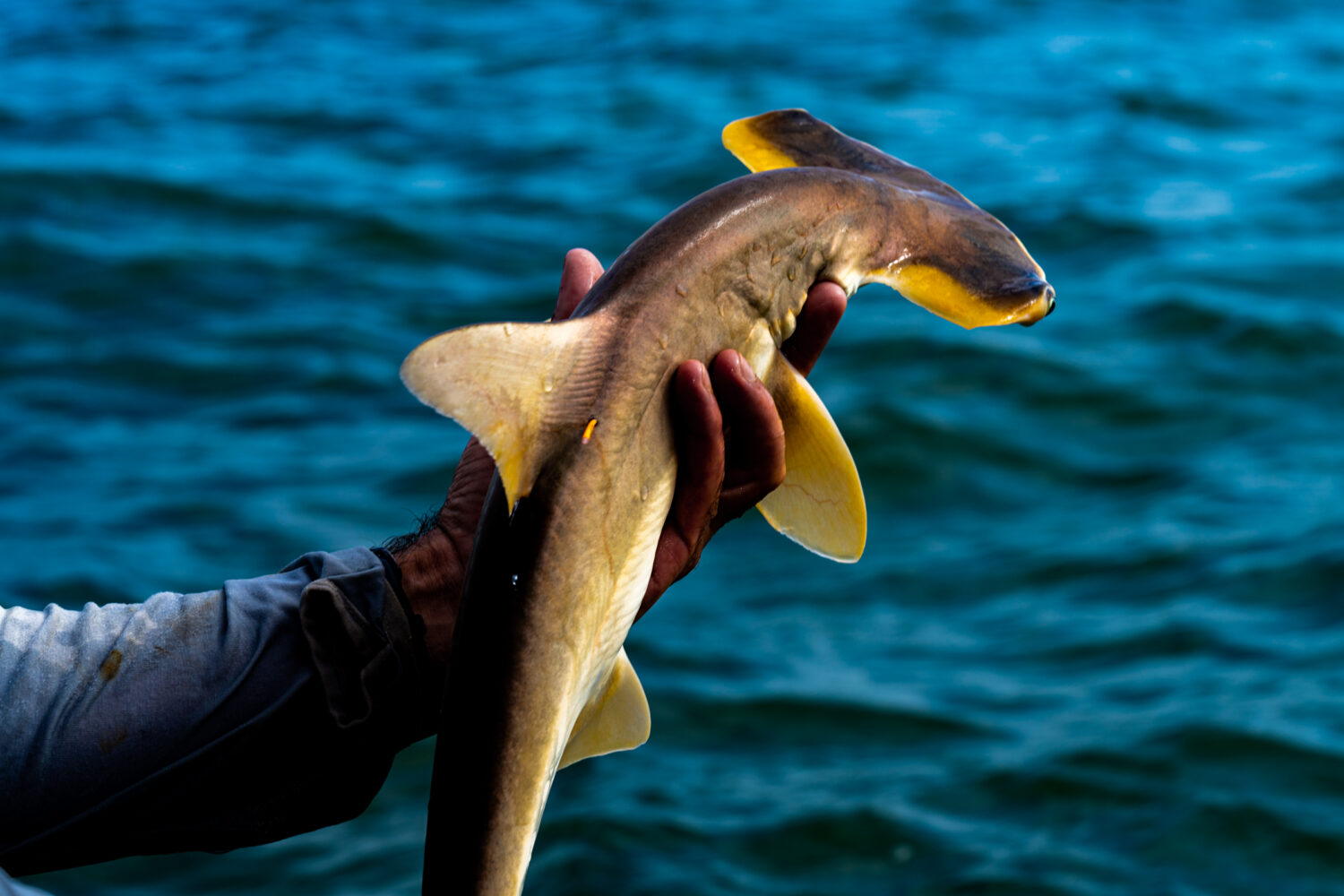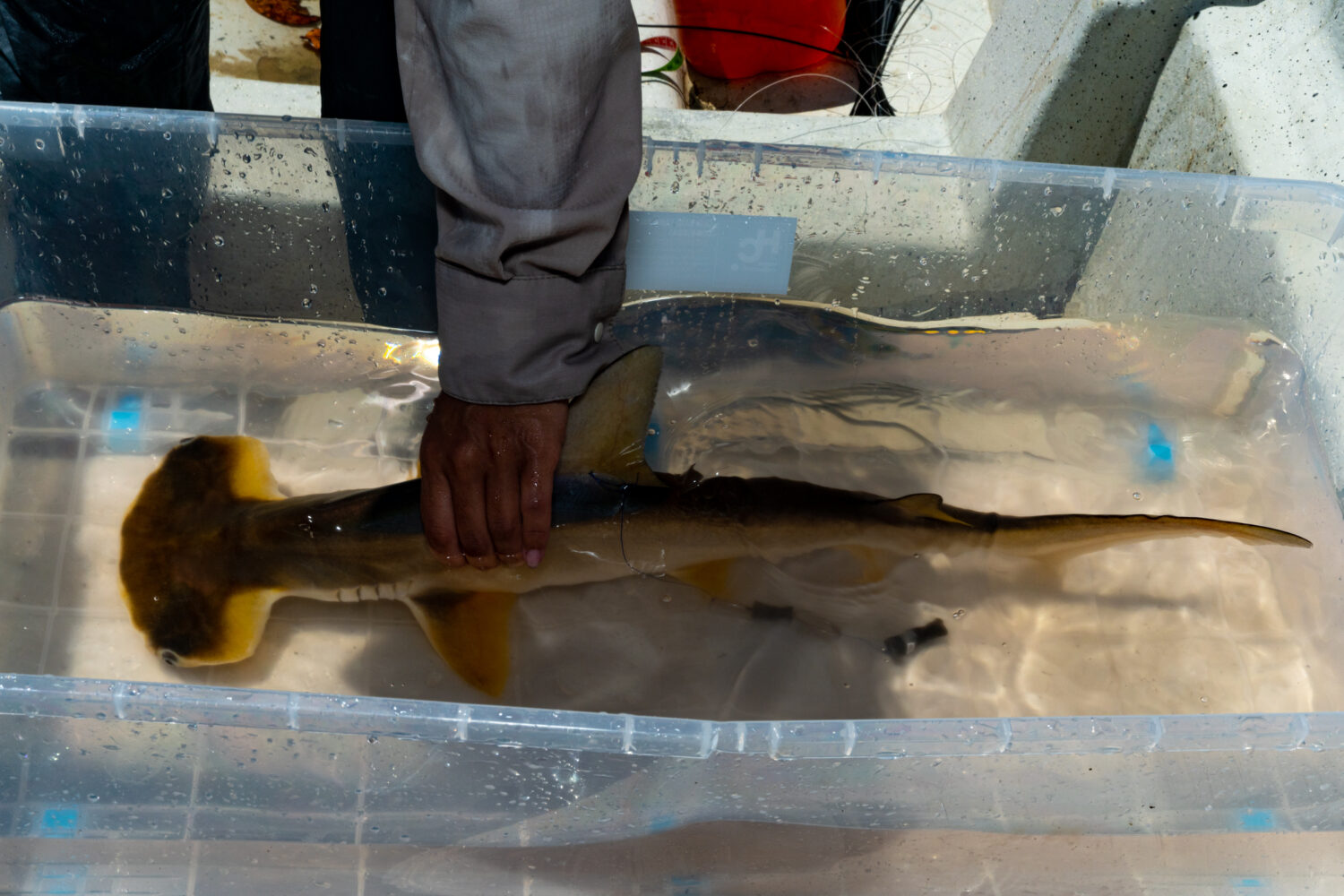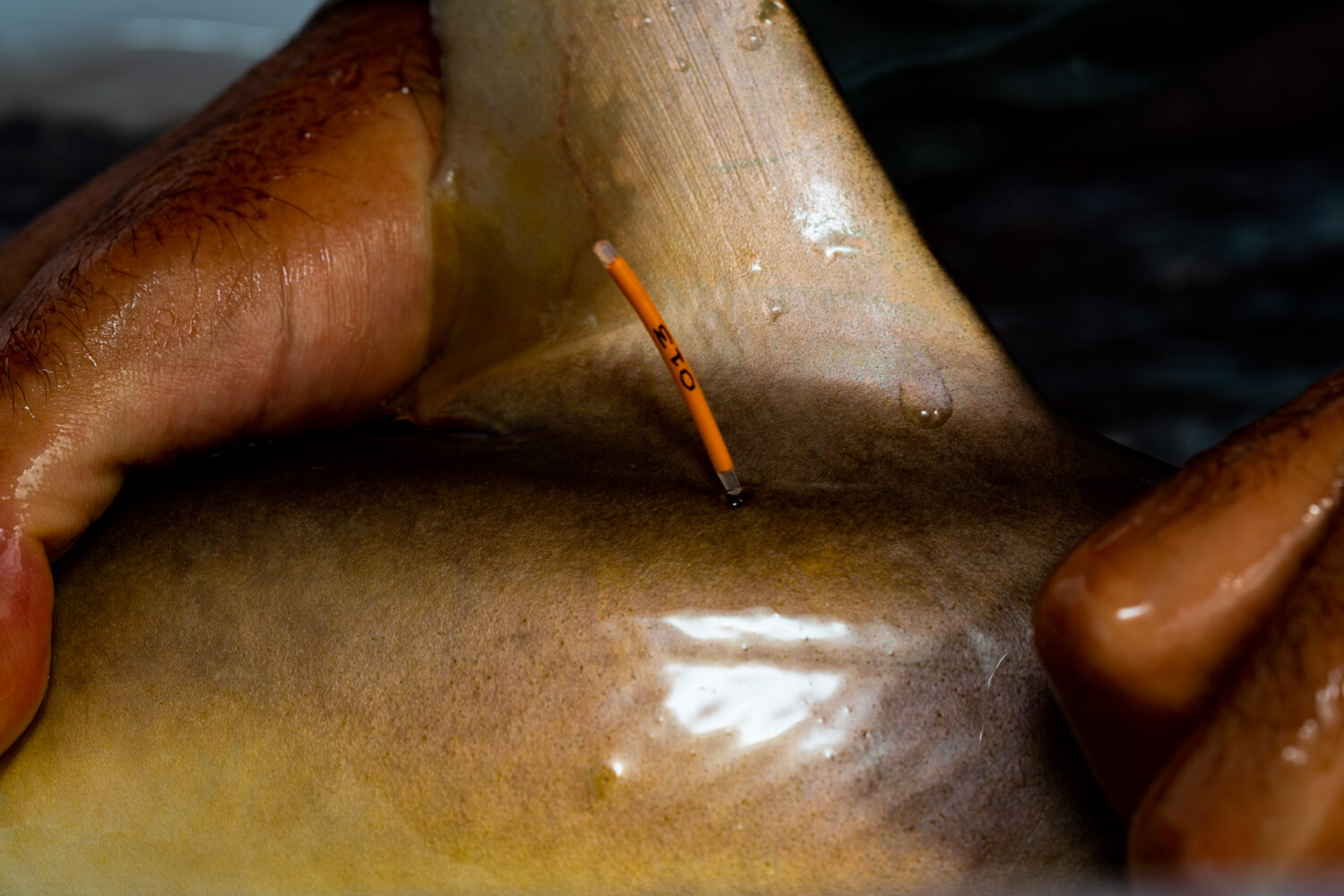Working together for scalloped bonnetheads
On the Pacific coast of Colombia, mangroves occur in high density, creating a biodiversity hotspot for marine life. The Uramba Bahía Málaga National Natural Park is home to many coastal species, including the scalloped bonnethead shark, a small hammerhead that is endangered and faces threats from overfishing and bycatch. SOSF project leader Maria Alejandra Herrera, who did her Masters degree with the SOSF Shark Research Center, studies these sharks in the region and hopes to pinpoint areas of key conservation importance. In a recent study, she tagged a group of them with acoustic transmitters to identify the areas they frequent the most and thus to determine their critical habitat. The scalloped bonnethead Sphyrna corona is listed as Critically Endangered on the IUCN Red List and in some parts of its historical range is believed to be extinct. These very small hammerhead sharks with a mallet-shaped head tend to live near the sea floor, where they feed on bottom-dwelling invertebrates and small bony fish. They thrive in the dynamic habitat of the dense mangrove forests and, as Herrera’s study revealed, they exhibit high fidelity to a very limited area. The small area they depend on also happens to be heavily fished, which makes this already endangered species particularly vulnerable to bycatch and fishing pressure. However, this site fidelity and use of a limited space also makes the scalloped bonnethead an excellent candidate for protection in a small no-take marine protected area.
In order to determine critical habitat for the scalloped bonnethead, Maria tagged 27 individuals during her recent study. A small transmitter was implanted into each shark and a ‘spaghetti tag’, which resembles a long uncooked spaghetti noodle, was attached behind its dorsal fin. Acoustic transmitters tracked the sharks’ locations and movements throughout their habitat, collecting a total of 419,723 data points during the study period. When analysed, the data indicated that the sharks tended to remain resident within a relatively small area. Many of the sharks were present for weeks or months of the monitoring period, or even for the entire duration of the study.
Project leader, Maria Alejandra Herrera, releasing a scalloped bonnethead shark. Photo © Emilio Posada
Considering their high residency at the study site, scalloped bonnetheads could be afforded significant protection by the designation of a marine protected area. The implementation of a no-take zone spanning three kilometres (1.8 miles) of coastline and two kilometres (1.2 miles) offshore (which would encompass much of these sharks’ range) would offer relief from fishing pressure. The species is extremely vulnerable to localised fishing, which is a large part of the local economy. Protecting the area from trawling or longline fishing would provide it with great conservation benefits and would give the local population a chance to stabilise.
Maria studies three hammerhead species that occur along the same stretch of Colombia’s coastline. The other two are the scoophead bonnethead and the scalloped hammerhead, and this part of the coast is one of the few remaining areas where these three species are known to live alongside one another. By studying the temporal movements of these three species, she has been working to identify their primary habitat and range so that they can be managed more strategically. All three are endangered and have seen significant declines in their populations. In parts of their range some have even become locally extinct.
Previously, little has been known about the way these sharks move through and interact with their environment, and where the species overlap. Studies like Maria’s can fill data gaps and help piece together a more complete picture of these sharks’ ecological niche in order to inform better conservation policies. The goal is to award as much protection to these sharks as possible, without placing an undue burden on the artisanal fisheries that support coastal communities. Both the local community and its fishermen are enthusiastic about conserving hammerheads, and Maria’s project aims to work with them on the designation of marine protected areas.
Fishing is fundamental to the people of this coast, both economically and culturally. Having a no-take zone that is small enough to have a minimal impact on fishing, yet large enough to protect critical shark habitat is key to creating an ethical and sustainable recovery plan. The local community has been involved with the conservation efforts and has shown its support for the recovery of the scalloped bonnethead. Maria says that this ongoing project is a good indication of how scientists and communities can work together towards effective conservation. Healthy ocean ecosystems are important for the livelihoods of coastal communities, so many locals are enthusiastic about protecting these marine resources.
Throughout the project, the local fishermen’s shift in attitude towards sharks has been largely positive. Many fishermen have begun to release the scalloped bonnetheads that get caught in their nets, and even voluntarily avoid fishing at the study site. Maria says the project’s next step is to propose a recapture project that will be led and carried out by the local fishermen in different communities. Their – and their communities’ – involvement is critical for effective and equitable conservation measures and, in this case, can help them to see these live sharks as a source of income through science rather than incidental bycatch. Maria hopes to secure a keystone grant to continue this important work to protect hammerheads along the Colombian coast.
**Reference:
Herrera MA, Cardeñosa D, Papastamatiou YP, Vaudo J, Bermúdez-Rivas C, Shivji M. 2024. High residency of a Critically Endangered hammerhead shark to a small area: implications for marine protected area management and design. Mar Ecol Prog Ser 743:47-63. https://doi.org/10.3354/meps14658



